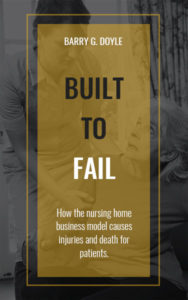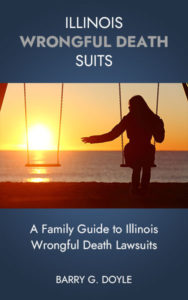The Illinois Department of Health has cited and fined Jerseyville Nursing & Rehab Center when staff failed to properly assess, document, and implement new interventions following multiple falls of a severely cognitively impaired resident, resulting in a delay in diagnosing and treating the resident’s broken hip. The resident suffered for five days with an undiagnosed hip fracture until X-rays were finally ordered, revealing a broken left trochanter that required hospitalization.
The case involves an elderly resident with multiple medical conditions including dementia, tremors, vertigo, and a history of falls. According to facility records, the resident was documented as “severely cognitively impaired” requiring “maximum/substantial assist for activities of daily living (ADLs) and mobility.” The resident’s care plan identified her as “at risk for falls” and included numerous interventions such as toileting assistance every two hours, non-skid socks, standby assistance when ambulating with walker, frequent rest periods, and placement in common areas for increased supervision.
Despite these interventions, the resident experienced a series of falls. On the first documented fall, the resident’s Power of Attorney (POA) brought to staff’s attention that the resident had “abrasion/bruised area to left forehead and an area into left hairline and that the resident complains of pain to head and to left upper hip down into left upper thigh and left foot slightly rotated inwards.” The POA noted that when assisting the resident from the toilet, the resident “started complaining of pain left hip and had a difficult time getting up.” The resident was sent to a local hospital for evaluation, with the hospital reportedly finding “everything was negative” based on CT scans and X-rays.
Four days later, another incident occurred when the resident was “found lying on the bathroom floor on her back with her hands behind her head.” Notes indicated “no new injury” though “bruising continues to right arm and some areas on forehead.” During the process of lifting the resident, staff documented that “she begins to yell and resist care” and “begins to shake all over.” The resident was again transported to the local hospital, with follow-up notes indicating “no injuries and range of motion within normal limits.”
Three days after this second hospital visit, staff documented that the resident was “displaying difficulty with ambulation and transfer this shift as well as bruising to the left hip and thigh area and complaints of pain.” The resident’s daughter expressed concerns that no X-rays had been completed during the previous hospital visit. Only then did the nursing home order X-rays of the left hip, leg, and ankle.
The next day, the resident was found “sitting on wheelchair pedals” with the roommate reporting that “she sat on her pedals hanging onto the arms of the wheelchair.” Again, staff documented “no new bruises” and “no complaints of pain, discomfort, or facial expressions.” However, the following day, progress notes finally acknowledged that the resident “has a broken Trochanter left hip.” The resident’s daughter wanted the resident to see a specific physician who would not be available until a later date, but staff noted the resident was “getting worse, and having more pain.” Later that day, the resident was noted with “increased pain to left hip” and was finally sent to the local hospital for “evaluation and treatment.”
During the investigation, the Director of Nursing (DON) initially stated that she did not think the hip fracture was related to the documented falls, suggesting there might have been an “unknown injury.” Later, the DON acknowledged that “we had been trying to keep her in her chair because she was getting some medication for pain but her daughter kept walking her and would complain of pain so that is why we ordered the x-ray.” The DON confirmed that “there should be an intervention after every fall or incident, and they should be on the care plan,” yet the investigation found no documentation of new interventions for the falls.
Notably, the facility’s own fall policy, which had not been updated since 2017, clearly states that “any change of plane should be considered a fall” and “a fall without injury is still a fall.” The Regional Director confirmed this definition during the investigation. The policy further states that falls should be managed through “prevention, investigation, and implementation, and evaluation of intervention,” yet there was no evidence these steps were properly followed for the resident’s falls.
One of our core beliefs is that nursing homes are built to fail due to the business model they follow and that unnecessary accidental injuries and wrongful deaths of nursing home residents are the inevitable result. Our experienced Chicago nursing home lawyers are ready to help you understand what happened, why, and what your rights are. Contact us to get the help you need.



Leave a Reply
You must be logged in to post a comment.